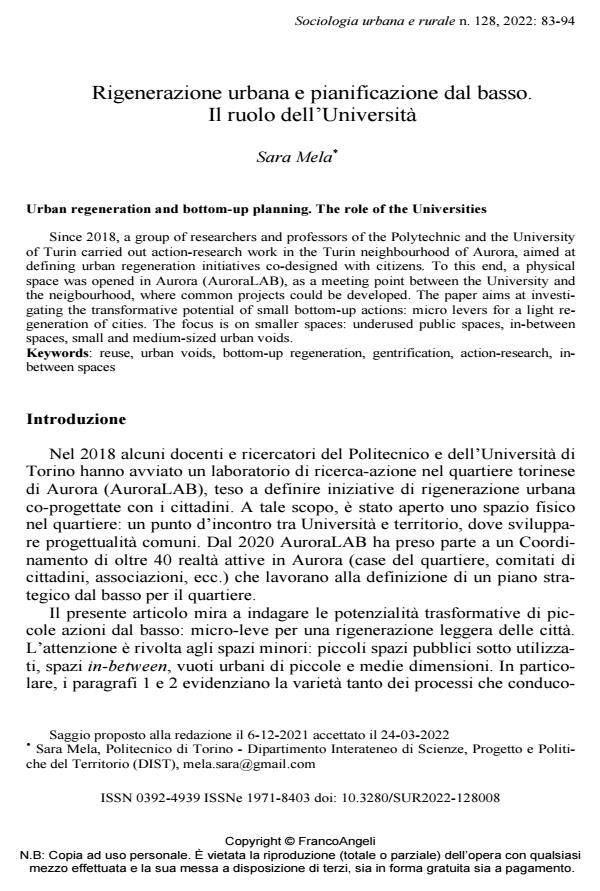Urban regeneration and bottom-up planning. The role of the Universities
Journal title SOCIOLOGIA URBANA E RURALE
Author/s Sara Mela
Publishing Year 2022 Issue 2022/128
Language Italian Pages 12 P. 83-94 File size 460 KB
DOI 10.3280/SUR2022-128008
DOI is like a bar code for intellectual property: to have more infomation
click here
Below, you can see the article first page
If you want to buy this article in PDF format, you can do it, following the instructions to buy download credits

FrancoAngeli is member of Publishers International Linking Association, Inc (PILA), a not-for-profit association which run the CrossRef service enabling links to and from online scholarly content.
Since 2018, a group of researchers and professors of the Polytechnic and the University of Turin carried out action-research work in the Turin neighbourhood of Aurora, aimed at de-fining urban regeneration initiatives co-designed with citizens. To this end, a physical space was opened in Aurora (AuroraLAB), as a meeting point between the University and the neigbourhood, where common projects could be developed. The paper aims at investigating the transformative potential of small bottom-up actions: micro levers for a light regeneration of cities. The focus is on smaller spaces: underused public spaces, in-between spaces, small and medium-sized urban voids.
Keywords: reuse, urban voids, bottom-up regeneration, gentrification, action-research, in-between spaces
Sara Mela, Rigenerazione urbana e pianificazione dal basso. Il ruolo dell’Università in "SOCIOLOGIA URBANA E RURALE" 128/2022, pp 83-94, DOI: 10.3280/SUR2022-128008